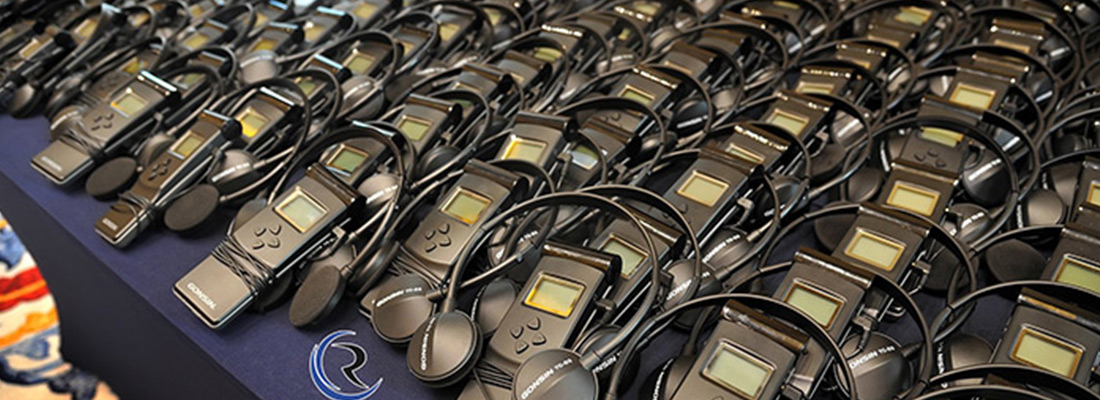Resources
Products
NEWS
In today's interconnected global landscape, effective communication is essential for successful collaboration and knowledge exchange. However, the diversity of languages spoken at conferences can pose a significant challenge. This guide explores the pivotal role of conference translation systems in breaking language barriers and facilitating seamless communication in multilingual environments.
Conference translation systems, also known as interpretation or interpretation systems, are sophisticated setups designed to enable real-time language translation during conferences, meetings, or events. These systems ensure that participants, regardless of their native languages, can engage in effective communication by receiving spoken or written translations of the proceedings.
The fundamental components of a conference translation system include transmitters, receivers, microphones, and interpreter booths. Transmitters send the interpreted content to the receivers worn by participants, allowing them to select their preferred language. Interpreter booths house language professionals who deliver real-time translations, bridging the language gap and fostering inclusive communication.
Simultaneous Interpretation: Simultaneous interpretation is the most common type used in conferences. Here, interpreters translate the speaker's words into the target language in real-time, allowing participants to hear the translation through their receivers almost immediately. This method ensures the continuity of the conference without significant interruptions.
Consecutive Interpretation: Consecutive interpretation involves the speaker pausing to allow the interpreter to translate segments of their speech. While this method is less common in large conferences due to time constraints, it is often used in smaller meetings or discussions.
Remote Interpretation: Advancements in technology have given rise to remote interpretation systems. In this setup, interpreters can provide translations from a different location, connecting to the conference through the internet. This approach offers flexibility and cost-effectiveness, particularly in virtual or hybrid events.
Needs Assessment: Before selecting a conference translation system, conduct a thorough needs assessment. Consider the languages spoken, the number of participants, and the venue size. This evaluation ensures that the chosen system meets the specific requirements of the event.
Quality Equipment: Invest in high-quality translation equipment, including transmitters, receivers, and interpreter booths. Quality equipment is crucial for clear and accurate translations, preventing disruptions and ensuring a positive experience for participants.
Experienced Interpreters: The success of a conference translation system heavily relies on the expertise of the interpreters. Employ experienced professionals who are fluent in the required languages and possess a deep understanding of the subject matter. This guarantees accurate and contextually appropriate translations.
Testing and Rehearsals: Conduct thorough testing and rehearsals before the event to identify and resolve potential issues. Ensure that all equipment is functioning correctly, and interpreters are familiar with the content and the speakers' pacing.

As technology continues to evolve, the future of multilingual conferencing holds exciting possibilities. Artificial intelligence (AI) is making strides in language processing, paving the way for enhanced real-time translation capabilities. Machine learning algorithms are improving language recognition and understanding, contributing to more accurate and context-aware translations.
Furthermore, the rise of remote and virtual conferences is reshaping the landscape of conference translation systems. Cloud-based solutions and virtual interpretation platforms enable seamless multilingual communication, transcending geographical barriers and offering a more inclusive experience for global participants.
In conclusion, conference translation systems play a pivotal role in breaking language barriers and fostering inclusive communication in diverse settings. From the fundamental components of the systems to the various types of interpretation and best practices for implementation, a comprehensive understanding of these systems ensures the success of multilingual conferences. As technology continues to advance, the future promises even more innovative solutions, further bridging the linguistic divide and facilitating meaningful collaboration on a global scale.